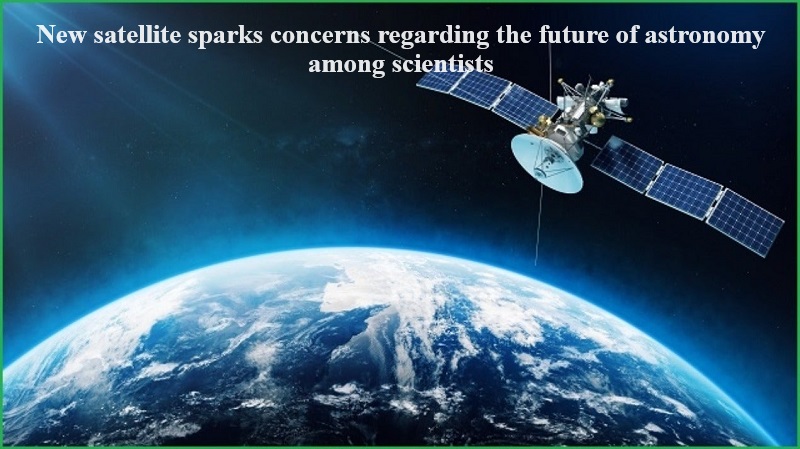
A new satellite has become one of the most prominent objects visible in the night sky, raising concerns among scientists about the future of astronomy.
The bright trails left by the BlueWalker 3 satellite and other new satellites are expected to shine as brightly as neighboring planets in the night sky. This increased brightness makes it challenging for astronomers to observe the universe without interference from streaks of light pollution caused by such satellites, according to a study published in the journal Nature.
BlueWalker 3, a prototype communications satellite, features a large, flat, 692-square-foot array that acts like a mirror, reflecting sunlight back to Earth.
According to the study, the satellite’s peak brightness has a magnitude of 0.4.
Meredith L. Rawls, co-author of the paper and an astronomy research scientist at the University of Washington’s Department of Astronomy and DiRAC, explained, “The startling conclusion from our study is that the BlueWalker 3 satellite is one of the brightest things in the sky. Keep in mind, astronomers use a magnitude system, which is ‘backwards’—brighter objects have smaller magnitudes, so 0.4 is quite bright. There are only about six stars that are brighter in the night sky than this.”
A negative magnitude indicates greater brightness. For context, the sun has a magnitude of -27, and the full moon has a magnitude of -13.
Rawls also highlighted the significance of characterizing the brightness of BlueWalker 3 and understanding its impact since many groups plan to launch similarly bright satellites into low Earth orbit (LEO) in the near future.
The issues arising from BlueWalker and other bright satellites in the night sky stem from the amount of light they reflect back to Earth. This reflected light can interfere with astronomical observations, including sky surveys and the detection of near-Earth asteroids, particularly during twilight hours.
Brad Young, co-author and lead coordinator of visual observing at the International Astronomical Union Centre for the Protection of the Dark and Quiet Sky from Satellite Constellation Interference, Paris, emphasized that these problems range from interfering with astronomical observatories to potentially misdirecting migrating birds due to the satellites’ appearance.

Post Your Comments